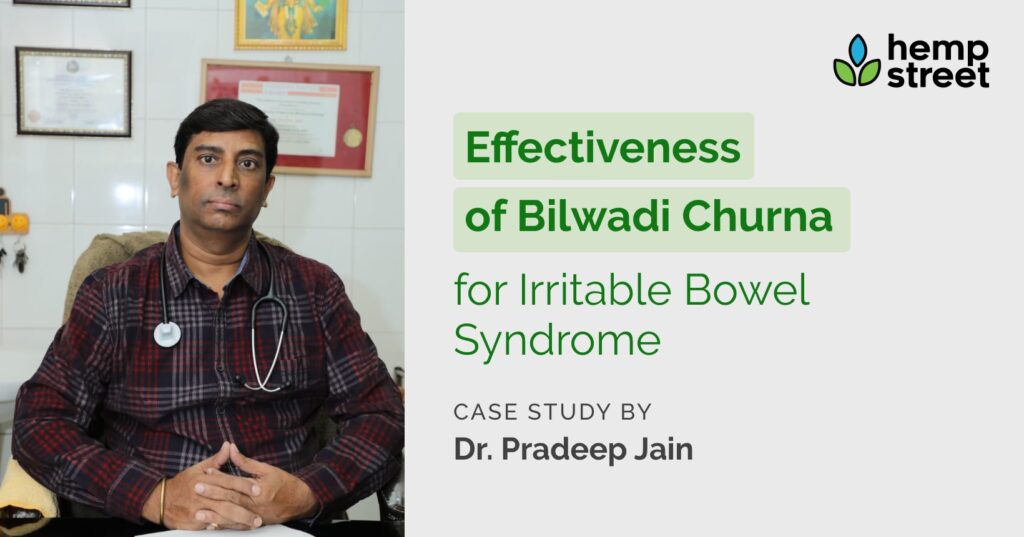Abstract
Irritable bowel syndrome (IBS) is characterized by stomach pain or discomfort that persists for at least three months in the absence of a discernible medical cause. Identifying main stressors/triggers such as emotional, physiological, and psychological pain, including anxiety and depression, is also part of the IBS diagnosing process.
The condition was classified by Ayurveda as faeces transit with constipation or diarrhea, as well as the presence of undigested or digested food particles. This ailment also causes thirst, pedal oedema, stomach cramps, discomfort, fever, and vomiting. Grahani symptoms are comparable to those of IBS. As a result, the Grahani rog has been linked to IBS. The disease is linked with bad eating habits and a stressed life and the main functional component of Mahastrotas is grahani, also known as a pittadhara Kala.
Case description
The 36-year-old male patient had complaints of increased frequency of mucus coated stools along with diffuse pain in the abdomen for the last two years. The pain was relieved after defecation. However, he also had complaints of loss of appetite resulting in less satiety and weight loss.
In Ayurveda, the constant consumption of incompatible foods, poor appetite along with lack of exercise, and sleep lead to the weakening of the Pachak Pitta (digestive fire), resulting in gastrointestinal ailment. These issues also lead to rectal pain, irregular bowel movements, stomach cramps, weakness, weariness, weight loss, bloating, lack of appetite, abnormal bowel movement, blood in stool, diarrhea etc.
Diagnosis
The patient was diagnosed with Irritable Bowel Syndrome/ Grahani
Physical Examination
The routine examination showed:
- Dull pain abdomen persistent,
- Pain-relieving after defecation, and
- Progressive weight loss
Treatment Plan
To treat the ama or toxins and balancing the three doshas, namely Vata, Pitta, and Kapha, the following remedies were recommended:
- A healthy bland diet to improve the digestive system. Meals included buttermilk,khichdi, soups, and other nutritious foods in your diet.
- Followed the pharmaceutical procedure to the point:
-
- Deepan and Pachan
- Sangraahi
-
- Anti-infective
- Balya
Observation
The treatment plan focused on decreasing the pain, and frequency of the stools and stimulating the appetite for healthy weight gain. Gradually after proper medications and certain lifestyle changes, all the subjective parameters which were expected were achieved.
The ingredients of Bilwadi churna aided as an adjuvant to cure the condition by treating the samprapti vighattan. Acharya Charak has also mentioned Bilwa as sangrahi, deepaniya and Vata-Kapha shamak plant. Moch rasa used here acts as Graahi, Balya and Rasayan. Shunthi, saunf, bhanga etc. acts as deepaniya and paachniye along with analgesic and anti-inflammatory effects. So, the complete formulation i.e. Bilwadi churna to treat Grahani is very effective
Discussion
The condition was classified by Ayurveda as faeces transit with constipation or diarrhoea, as well as the presence of undigested or digested food particles. This ailment also causes thirst, pedal oedema, stomach cramps, discomfort, fever, and vomiting. Since Grahani is associated with IBS, Ayurveda is recommended as a safe treatment and scientists need to ensure effective therapeutic strategies to treat the issue.
(Grahani symptoms are comparable to those of IBS. As a result, the Grahani rog has been linked to IBS. The entire world is turning to Ayurveda for safe treatment methods. As a result, our scientists must devise the most effective therapy strategy.)
Conclusion
Bilwa’s Sangrahi virtue is very helpful in treating the increased frequency of defecation and the consistency of the stool. In Bilwadi churna, cannabis or Bhang boosts its potency and gives treatment for Irritable Bowel Syndrome (IBS) as well as additional add-on characteristics such as Deepana, Pachan, Kaphahara, Vedanasthapak, and Rasayana.
Case Study by Dr. Pradeep Jain
Published By Hempstreet




